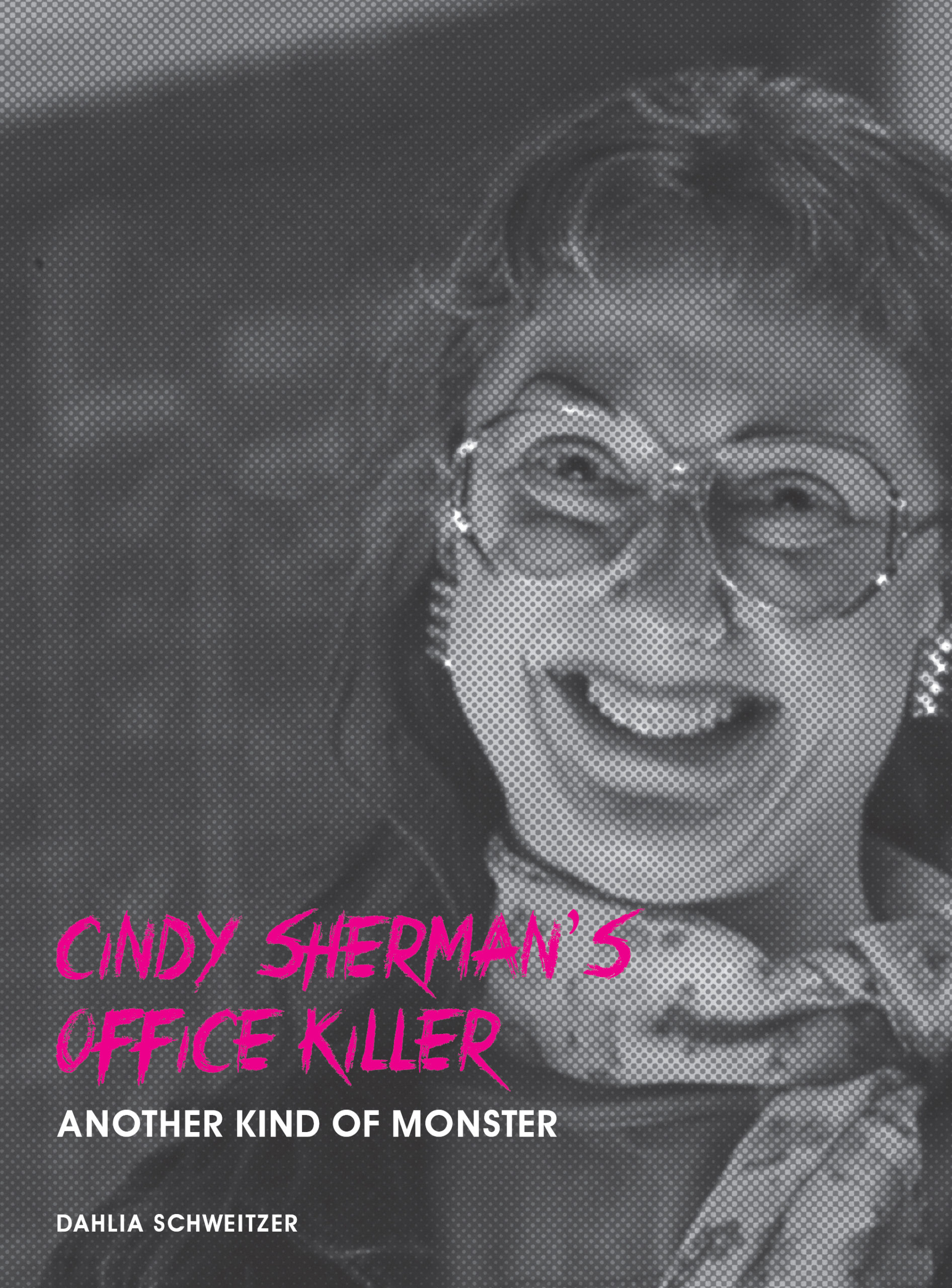Cindy Sherman’s Office Killer

One of the twentieth century’s most significant artists, Cindy Sherman has quietly uprooted conventional understandings of portraiture and art, questioning everything from identity to feminism. Critics around the world have taken Sherman’s photographs and extensively examined what lies underneath. However, little critical ink has been spilled on Sherman’s only film, Office Killer, a piece that plays a significant role both in Sherman’s body of work and in American art in the late twentieth century.
Dahlia Schweitzer breaks the silence with her trenchant analysis of Office Killer and explores the film on a variety of levels, combating head-on the art world’s reluctance to discuss the movie and arguing instead that it is only through a close reading of the film that we can begin to appreciate the messages underlying all of Sherman’s work.
The first book on this neglected piece of an esteemed artist’s oeuvre, Cindy Sherman’s Office Killer rescues the film from critical oblivion and situates it next to the artist’s other iconic works.
What People Are Saying
“Smart, sassy, and scholarly all at once, this is a wonderful book.”
— Toby Miller, author of Blow Up the Humanities and Greening the Media
“Schweitzer succeeds in doing what she set out to do — valorizing Office Killer — by dissecting it in such a vivid and compelling way that it can be seen in a new light. Even though I appeared in the film, I dismissed it, along with everyone else. But I now see its importance — and its connections to films like Mildred Pierce, which I just so happen to love. Reading the book, I felt like I was in my very own seminar with Professor Schweitzer, emerging from the experience with knowledge of Cindy Sherman, mass media, gender identity, and more.”
— Florina Rodov, actress, Office Killer
“Dahlia Schweitzer’s Cindy Sherman’s Office Killer: Another Kind of Monster is not just a study of this critically-, commercially-, and perhaps even criminally-overlooked film: it is an immersion in the world of Office Killer. Schweitzer’s deft, witty and empathetic prose takes the reader from the corporate space of Constant Consumer magazine, through the confining domestic structures of the film’s protagonist, Dorine, and down to the basement where her victims find a new home. As our tour guide through this female-centred environment, Schweitzer encourages our sympathy in strange, surprising places, pointing out telling details, cluing us into the cultural context, and analysing the uneasy atmosphere.
“If Office Killer is the movie of Sherman’s famous photographs, this is another kind of text that deserves to be considered alongside them: an authentic and compelling love letter from Schweitzer to Sherman.”
— Will Brooker, author of Hunting the Dark Knight
“Dahlia Schweitzer’s book takes Office Killer’s strangeness and relative obscurity and painstakingly unpacks them, in the process escorting her readers on a tour that takes in Sherman’s oeuvre as one of the most celebrated photographers of our times, the matrix of cinema/Hollywood/genre, and the industrial, social and political landscape of late 1990s America. What comes through is Schweitzer’s desire both to make sense herself of her own responses to the film as someone clearly invested in Sherman’s work (she opens with a wonderfully disarming story of writing to Sherman to ask for advice on ‘what to do with my life’) and to elucidate the larger ‘puzzle’ that it represents: what is at stake in the disquieting experience Office Killer provokes and the fact of its critical and commercial failure?
“In this sense, then, and to take the tour analogy a little further, Schweitzer constitutes an astute but always accessible guide through the film itself and the multiple relevant critical contexts she points to incisively as informing it. At a micro-level the close reading provided by her textual analysis meticulously works through key images and sequences, reflecting on how the film’s often flat sense of palette and cinematography unnerve. But at the same time she is able to weave in and explore the film’s connection with such diverse references and events as Tess McGill in Mike Nichols’ Working Girl (1988), the AIDS ‘crisis’, and the corporate economy of 1990s America.
“Whether one is an older, intrigued reader who lived through all of this, or a curious young undergraduate to whom these are distant cultural moments, Schweitzer joins the dots between them in unfailingly persuasive and lucid fashion to underline Office Killer’s heretofore undocumented status: as an ‘important film’ which serves both as a ‘cultural archive’ and a central locus point in our understanding of Sherman’s work.”
— Deborah Jermyn, author of Female Celebrity and Ageing: Back in the Spotlight
